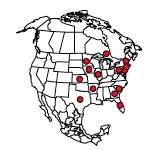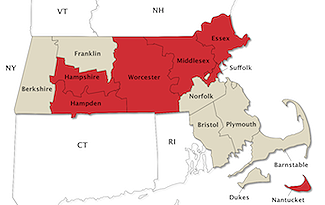Synemosyna formica Hentz, 1846

Richman, Cutler & Hill 2012
Synemosyna is a largely tropical, New World genus whose members are ant-like in form. Two species occur in North America, one originally described by Hentz. In his account of S. formica Hentz notes that although he had encountered this species repeatedly, it was long before I distinguished them from ants.
Ant mimicry is common among many groups of arthropods including several genera of salticids. Mimicry itself is a deceptively simple idea whose real world variations and complexities have led to a cottage industry for behaviorists. Batesian mimicry, in which the mimic exhibits the overall look and/or behavior of the model in order to gain some measure of protection from predators (those potential preditors who have “learned” to avoid the model), may be thought of as the basic form of mimicry. Variations on Batesian mimicry among salticids include mimics that employ their ant-like adaptations to gain an advantage for preying on the model themselves (see Tutelina elegans). Yet another variation involves ant-like jumpers that seek out other jumping spiders that have a particularly strong aversion to ants. The mimics then employ their “fright-factor” to scare off other species of adult salticids with eggs or young in order to prey on the defenseless offspring.
Massachusetts – First State / County Records, References

- ♦ F. G. Sanborn – Synemosyna formica – Essex (Ipswich), June – Emerton in Burgess, 1875: 74
- ♦ – S. f. – Hampden (Holyoke), July – Emerton in Burgess, 1875: 74
- ♦ – S. f. – Middlesex (Malden), July – Emerton in Burgess, 1875: 74
- ♦ J. H. Emerton – S. f. – Suffolk (Boston) – Emerton, 1891: 243, pl. 21, f. 5
- ♦ T. Murray – S. f. – Worcester (Harvard), May 2006 – BugGuide node #53281
- ♦ A. McKenna-Foster / MCZ – S. f. – Nantucket (Coskata Woods), September 2006 – record #126773
- ♦ C. Eiseman – S. f. – Hampshire (Pelham), September 2008 – BugGuide node #369137
- ♦ Connecticut – S. f. Kaston, 1948: 448 – 23 records
- Burgess, 1875; Wikipedia – Animal Mimicry; Cushing, P. 2012. Spider-Ant Associations: An Updated Review of Myrmecomorphy, Myrmecophily, and Myrmecophagy in Spiders. Psyche, vol. 2012, Article ID 151989




